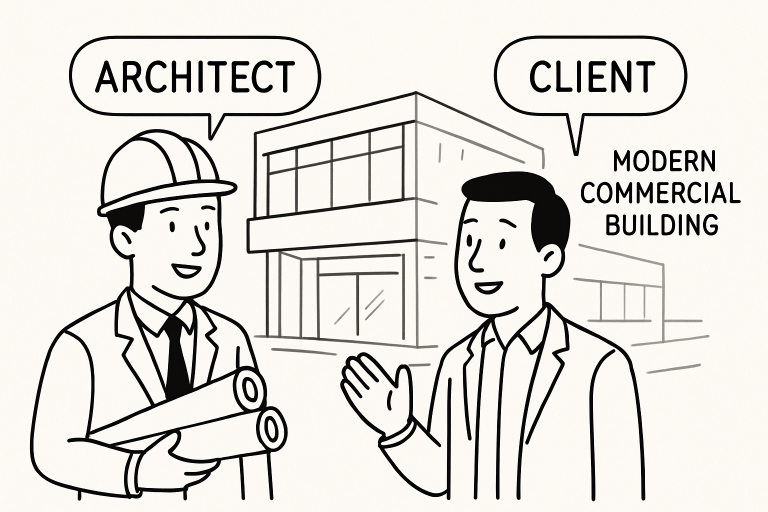The Multifaceted Role of Architects in Commercial Projects
Commercial architecture extends far beyond creating a visually appealing space. Architects in Scottsdale, AZ, oversee all phases of design and construction, orchestrating logistics, function, and safety alongside aesthetics. Their responsibilities span site selection, programming, conceptual design, compliance, documentation, and often extend through construction administration. Working closely with engineers and contractors, architects ensure the built environment aligns with both operational and business needs.
Collaboration among stakeholders is integral. Architects are central communicators, facilitating dialogue between business owners, developers, engineers, designers, and regulatory bodies. By synthesizing the requirements and aspirations of diverse groups, the architect produces unified, high-functioning commercial spaces that support business goals.
Balancing Aesthetics with Practicality
An inviting lobby or a smartly laid-out retail floor can transform how users engage with a commercial space, but great design must extend beyond visual delight. Leading architects prioritize workflow, accessibility, and safety while weaving in elements that embody the client’s unique style. Successful office projects, for instance, often feature natural light and open sightlines to boost morale and productivity, while retail environments use intuitive circulation paths to enhance customer experience and drive sales.
Careful material selection, flexible layouts, and acoustic considerations demonstrate how architects extract beauty from practical details.
Understanding Client Needs and Organizational Goals
Translating a brand’s identity into physical form is a nuanced process. Architects conduct thorough discovery phases, learning about a company’s ethos, target audience, and operational workflows. Through this research, they implement user-centric design, aligning physical space with the company’s culture, mission, and market positioning. Custom features, art installations, and branded color schemes all contribute to this alignment.
User-centric principles also mean considering employee comfort, wayfinding, and inclusivity. The architect’s empathetic approach not only shapes primary spaces but also accounts for “invisible” touchpoints—like lighting, air quality, and rest areas—to ensure a truly functional environment.

Sustainability and Wellness in Modern Commercial Spaces
Today’s commercial developments increasingly prioritize sustainability and human wellness. Architects integrate green building strategies, including energy-efficient systems, renewable materials, access to natural light, and green roofs. As organizations recognize the link between sustainability, employee satisfaction, and corporate reputation, eco-forward practices are essential in both design and execution.
Architects as Innovators: Adapting to Changing Trends
As work models evolve, architects champion flexible spaces with movable walls, multipurpose areas, and adaptable infrastructure that support hybrid and remote work. The adoption of touchless technologies, smart environmental controls, and high-performance acoustics enables a rapid response to evolving business needs. Whether rejuvenating aging office towers with new efficiency measures or creating hospitality-inspired workplaces, architects constantly explore new materials, digital design tools, and spatial strategies to keep pace with industry evolution.
Navigating Regulatory and Accessibility Challenges
Compliance is a foundational pillar in commercial architecture. Architects navigate complex local, national, and international building codes, zoning laws, and fire and safety regulations, ensuring each commercial property is legally sound and insurable. Accessibility is particularly crucial—adhering to the standards set forth by the ADA ensures that spaces are usable by everyone, regardless of ability, thereby reducing legal risks and expanding the potential user groups.
Thorough documentation, regular inspections, and clear communication with code officials help guarantee every project milestone meets the stringent requirements set by multiple agencies.
The Ripple Effect: How Thoughtful Design Influences Productivity and Culture
Data consistently shows that work environments directly affect productivity, satisfaction, and corporate culture. Companies that have invested in architect-led redesigns often report improved innovation, faster talent acquisition, and better employee retention.
Notable leaders in tech and creative industries attribute performance gains to tailored workspaces designed to foster community, creativity, and mental clarity—validating the deep impact of thoughtful commercial architecture.
Steps in Collaborating with Commercial Architects
For business owners considering a commercial project, the process begins with a consultation to outline vision, goals, and budget. Architects facilitate programming sessions and feasibility studies to establish a solid direction. Subsequent phases include concept and schematic design, documentation, and overseeing construction. Throughout, consistent communication and transparent goal setting are key. Clients should articulate their priorities early, provide timely feedback, and trust in the architect’s expertise to guide decisions towards a successful outcome.
Regular meetings and clear milestones ensure the project stays on track, budget, and true to the original intent—laying the foundation for a productive, functional space tailored to business needs.
Moving Forward: The Future of Commercial Space Design
Looking ahead, commercial architecture will continue to prioritize resilience, adaptability, and inclusivity. Trends for the next decade point towards ultra-flexible, technology-infused environments designed for rapid evolution. Expect growing investment in wellness facilities, community integration, and net-zero construction. The role of the architect will remain central in reshaping workplaces, retail, and hospitality spaces that reflect the ever-changing dynamics of work and society, preparing organizations to thrive in uncertain times.